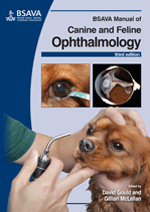
Full text loading...

Laboratory investigation is an important diagnostic tool in veterinary ophthalmology. As well as being the primary target for many diseases, the eye is also often involved in systemic disease processes, including infectious, neoplastic and immune-mediated conditions. Laboratory investigation can be the gateway to the accurate diagnosis of such diseases, which in turn plays a fundamental role in patient care and management. This chapter considers sample collection and handling; microbiological investigation; cytological evaluation; histopathological examination.
Laboratory investigation of ophthalmic disease, Page 1 of 1
< Previous page | Next page > /docserver/preview/fulltext/10.22233/9781910443170/9781910443170.3-1.gif

Full text loading...












